A residential electrician in East Ridge, Tennessee, is qualified and equipped to install whole-house surge protection that shields your home from sudden and damaging electrical spikes. With unpredictable weather patterns and an aging electrical grid common in the region, protecting your home’s electrical system isn’t just a smart idea—it’s a necessity.
Whole-house surge protection guards against power surges caused not only by storms but also by faulty appliances, grid issues, and wiring problems. Even small surges can slowly wear down your electronics over time. This guide explains how it works, why it matters, and what to expect from the installation process.
What Is Whole-House Surge Protection?
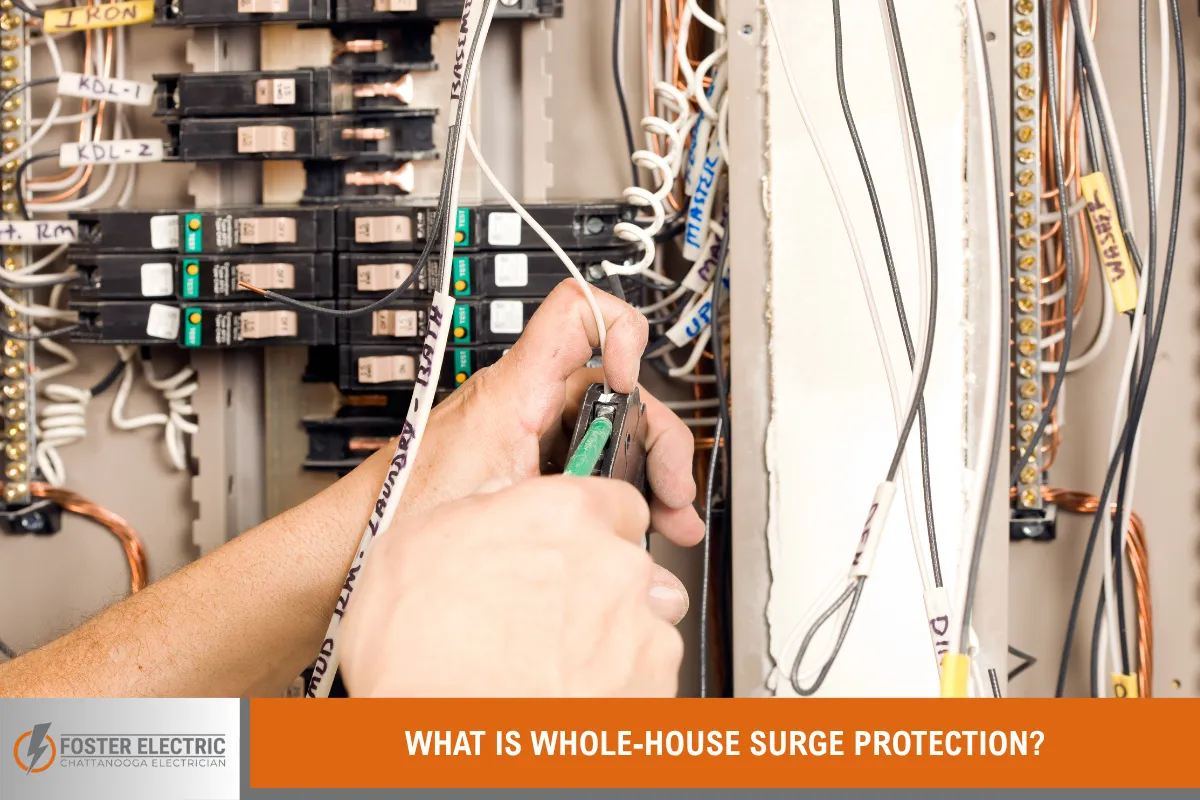
Whole-house surge protection refers to a centralized device installed at your home’s electrical panel to prevent voltage spikes from damaging your appliances and devices. It acts like a gatekeeper—monitoring incoming electricity and stopping dangerous surges before they spread through your wiring and into your home.
This device is designed to divert excess electricity into the ground, away from your home’s internal systems whether it’s a spike from a nearby lightning strike or a power surge from a malfunctioning utility line, the surge protector steps in within milliseconds to prevent harm.
There are different types of surge protection devices, but most residential installations rely on Type 2 protectors. These are installed at the breaker panel and are highly effective for homes in areas prone to electrical fluctuations. For optimal protection, homeowners often pair this with plug-in surge protectors on key electronics, such as computers and televisions, creating multiple layers of safety.
Responsibilities of a Residential Electrician in East Ridge, TN
A residential electrician is a licensed professional specializing in electrical systems within private homes. In East Ridge, electricians address a wide range of residential needs, from basic wiring to advanced protection systems, such as whole-house surge protection.
Their work typically includes:
- Upgrading and replacing outdated breaker panels
- Troubleshooting electrical issues and performing safety inspections
- Installing new lighting, outlets, and ceiling fans
- Rewiring rooms or entire homes to meet safety codes
- Adding circuits for appliances, spas, or workshops
- Installing surge protection systems and service panels
- Handling outdoor and landscape lighting systems
Every home in East Ridge has its electrical layout and challenges. Local electricians understand the unique demands of the area’s homes. They are trained to work by Tennessee’s safety codes and guidelines. This ensures installations are not just effective but also legally compliant.
How a Residential Electrician Installs Whole-House Surge Protection
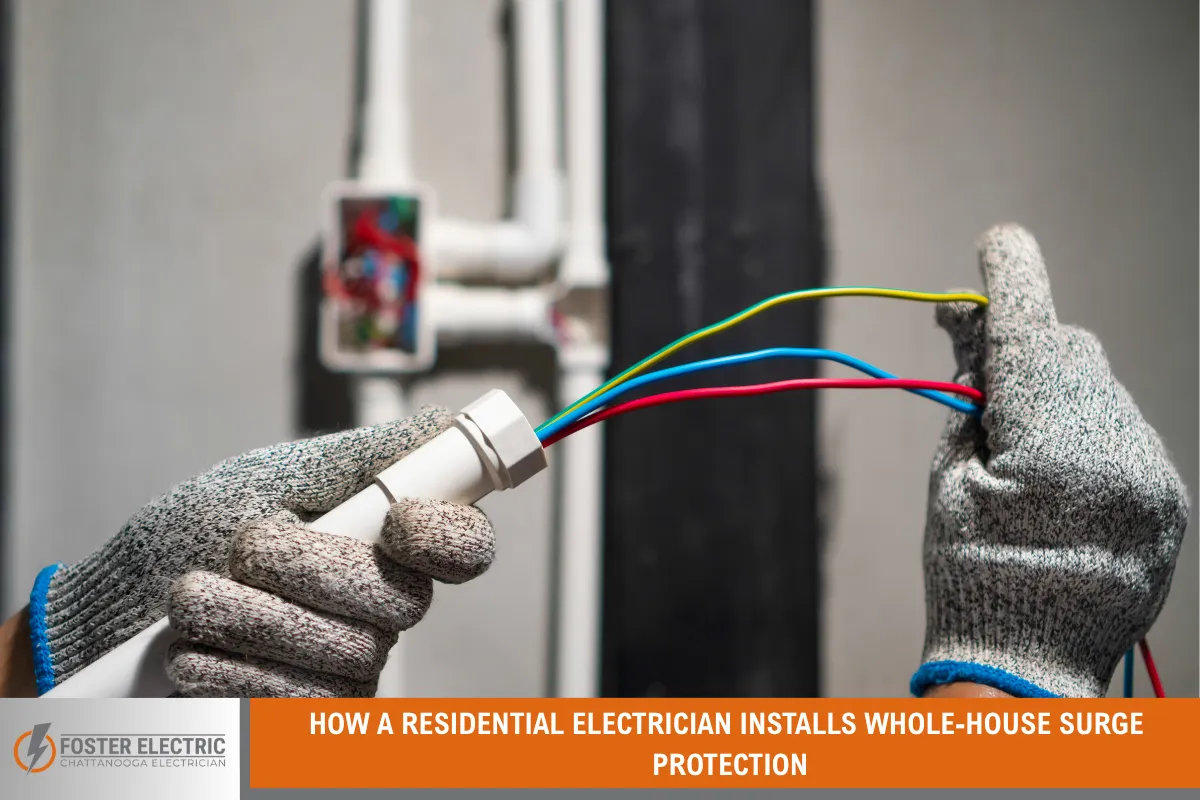
Installing a whole-house surge protection device involves more than just plugging something in. It requires knowledge of your home’s electrical system. It must be handled at the service panel, where the main electrical supply enters your house.
Here’s how the installation process typically works:
- Evaluation: The electrician assesses your current system, including the capacity and condition of your panel, to determine compatibility with the surge protector.
- Device Selection: Not all homes are the same, so the electrician recommends a surge protection device that suits your home’s size, appliance load, and surge risk.
- Installation: The device is wired directly into your main electrical panel. It must be placed in a way that allows it to intercept surges before they can travel to other circuits in your home.
- Testing and Verification: Once installed, the system undergoes thorough testing to ensure it functions correctly and provides full protection.
- Inspection: An experienced electrician ensures everything meets local building codes and safety standards before completing the job.
This process typically takes a few hours, and the electrician may also recommend installing additional outlet-based protectors in high-risk areas, such as home offices or entertainment centers.
Why Whole-House Surge Protection Is Essential in East Ridge
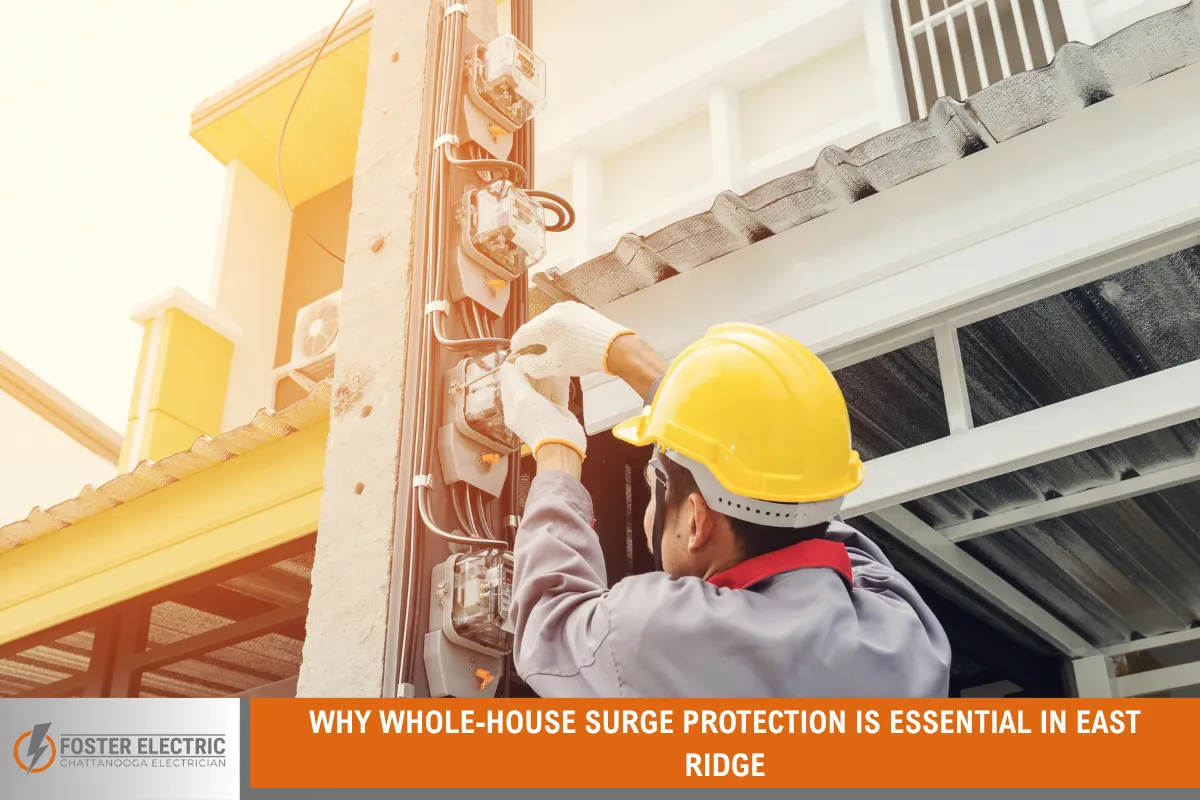
Homes in East Ridge face several environmental and electrical challenges that increase the likelihood of power surges. Frequent storms, high winds, and changes to the utility grid are just a few of the everyday risks that businesses face. These events can send sudden bursts of high voltage into your home through power lines, telephone lines, and even cable lines.
Another contributing factor is the use of heavy appliances. Items like HVAC units, refrigerators, and washers often cycle on and off throughout the day. This process can trigger mini-surges inside your home, which slowly deteriorate your electronics over time—even if you don’t notice it immediately.
Whole-house surge protection provides peace of mind by acting as a constant guard. It ensures that your electronics, appliances, smart devices, and even sensitive systems, such as HVAC thermostats or home security setups, remain safe and intact.
Signs Your Home Might Be at Risk for Power Surges
Even without a major storm, your home may be experiencing electrical surges regularly. Here are some signs that indicate the need for surge protection:
- Flickering or dimming lights when large appliances start up
- Frequent tripping of breakers or blown fuses
- Buzzing sounds from outlets or electrical panels
- Electronics that suddenly stop working or behave erratically
- Burnt smell near outlets or power strips
These signs point to internal electrical stress that, over time, could lead to serious damage. A residential electrician can investigate these issues and recommend an effective surge protection plan to safeguard your home.
Long-Term Advantages of Installing Surge Protection
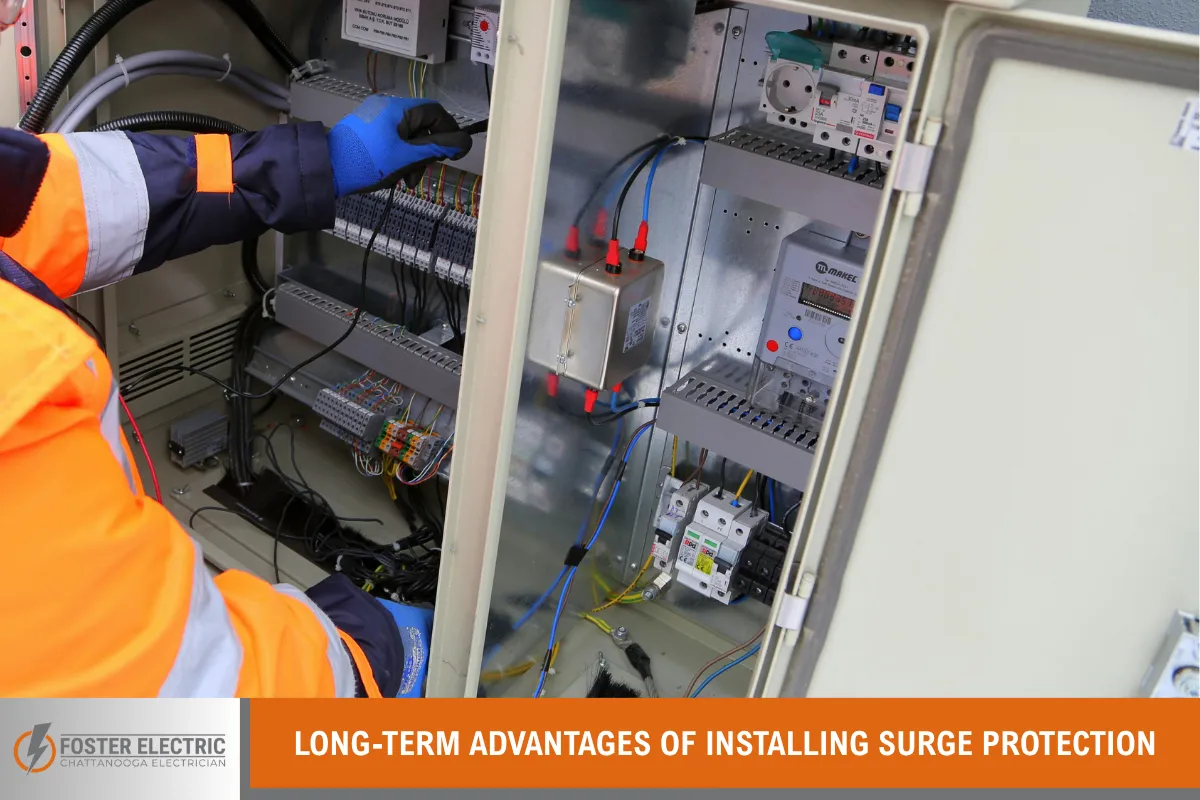
Whole-house surge protection offers more than just immediate safety. It also delivers long-term financial and practical benefits:
- Extended lifespan of electronics: Prevents wear and tear on sensitive components
- Fewer repairs and replacements: Reduces the need for costly emergency fixes or buying new appliances
- Increased home safety: Protects against potential electrical fires caused by overheating circuits
- Better power quality: Creates a cleaner and more stable electrical flow throughout your home
- Improved insurance protection: Some policies offer lower premiums or better coverage with installed surge protection systems
These benefits contribute to the overall value and functionality of your home. Over a few years, the system pays for itself by preventing damage and minimizing downtime.
How to Keep Your Electrical System Safe Year-Round
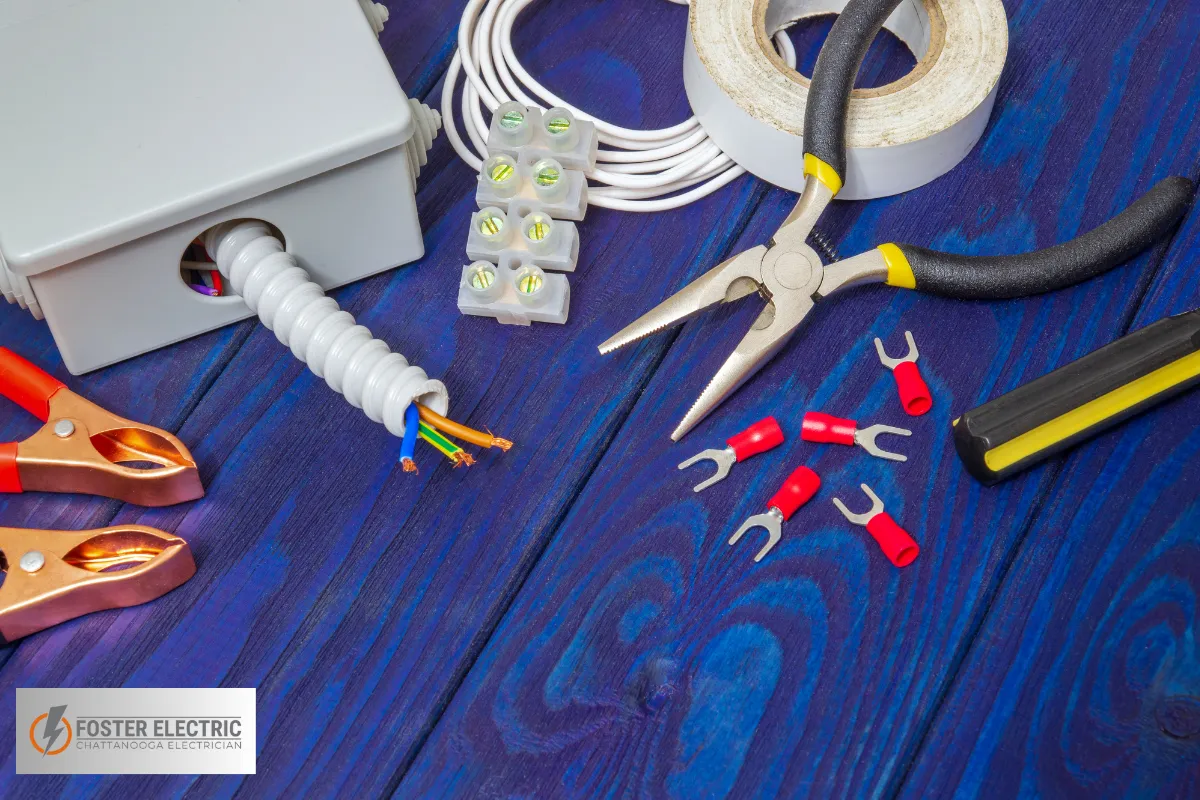
Surge protection is just one part of a complete electrical safety plan. Maintaining a safe home requires a combination of professional installations and smart habits.
Here are some simple ways to reduce risks:
- Schedule yearly electrical inspections with a licensed residential electrician to catch hidden issues
- Use plug-in surge protectors for valuable electronics like computers, TVs, and game consoles
- Unplug devices during major lightning storms if you don’t have a surge protection system
- Avoid daisy-chaining extension cords, which can overheat and fail
- Upgrade old wiring systems, especially in homes built before the 1980s
Working hand-in-hand with your electrician ensures that every corner of your home—from the garage to the kitchen—is operating safely and efficiently.
Wrapping It Up: Why It’s Worth Making the Upgrade
Whole-house surge protection isn’t a luxury—it’s a smart investment. From unpredictable storms to everyday appliance use, your home faces constant electrical challenges. Installing a professionally wired protection system offers the stability and defense your devices need to function safely for years to come.
By working with a knowledgeable residential electrician in East Ridge, you’re getting more than just a product—you’re getting expert insight, reliable protection, and the peace of mind that your home is better prepared for whatever comes through the power lines. Whether you’re protecting a home office full of sensitive tech or a house filled with smart devices and appliances, the benefits speak for themselves.
East Ridge Residential Electrician – Foster Electric
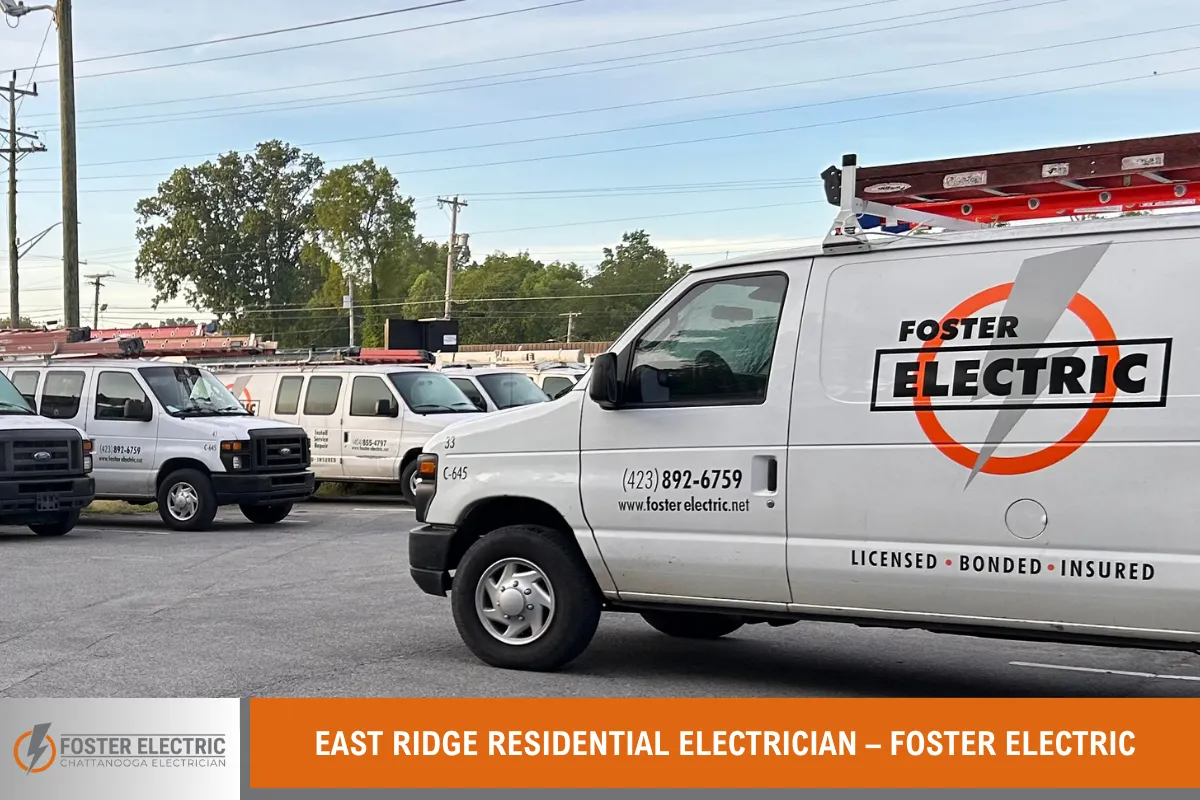
Foster Electric in East Ridge provides dependable and professional service, offering reliable electrical solutions for your home. Our residential electricians are trained to handle all types of installations and repairs, including whole-house surge protection. We make sure your home’s power system is both safe and efficient.
Whether you’re planning a home upgrade or want to keep your appliances safe from sudden power spikes, our team can help. We provide trusted electrical repair and installation services throughout East Ridge. Call us today at (423) 826-7270 to schedule your appointment.
Frequently Asked Questions About Whole-House Surge Protection
How does a whole-house surge protector work?
A whole-house surge protector is a device installed at the service entrance—usually near the circuit breaker panel—to stop dangerous voltage spikes from reaching your home’s wiring. It acts as a surge arrestor, redirecting excess energy caused by external surges (such as lightning strikes or power company grid issues) safely into the grounding wire.
These devices monitor the electrical current entering your home. When a power surge occurs, the surge suppressor activates instantly—usually in less than a nanosecond. It clamps the voltage down to a safer level (known as clamping voltage) before the surge can damage circuit boards, HVAC systems, or other electronic appliances.
Key Features:
- Indicator lights to show functionality
- Designed for external and internal surges
- Works in tandem with power strip surge protectors for layered defense
Whole-house surge protectors give peace of mind and long-term protection against surge damage to your entire electrical system.
Are power strips the same as surge protectors?
No, and this is a common misunderstanding. While both devices may look similar, they serve different purposes. A power strip is simply a multi-outlet extension cord—it gives you more plug space. Still, it offers zero protection from power surges or voltage spikes.
A power strip surge protector, on the other hand, contains a built-in surge suppressor that can absorb small surges, especially those caused by internal power surges from appliances like refrigerators or air conditioners switching on and off.
However, these devices:
- Only protect what’s plugged into them
- They are less effective against lightning strikes or external power surges
- Wear down over time and need replacement (especially after a big surge)
For full home protection, a whole house surge protector installed by residential electricians is essential. It guards the entire electrical system, not just individual devices.
What types of power surges affect homes in East Ridge?
Homes in East Ridge are exposed to both external and internal power surges. Knowing the source helps you choose the right surge protection system.
- External Surges:
- Triggered by lightning strikes, utility grid switching, and downed lines
- Often enter through your service entrance
- Can cause catastrophic damage instantly
- Internal Surges:
- Caused by everyday appliances cycling on and off (like HVAC systems, washers, and dryers)
- Typically small but frequent—slowly degrading home appliances over time
These power surges damage circuit boards, overheat wiring, and reduce the lifespan of sensitive electronic appliances. That’s why residential electricians recommend installing both whole-house surge protectors and power strip surge protectors for optimal coverage.
Preventing both types of surges ensures long-term stability in your home’s electrical system, minimizing costly repairs and replacements.
What should I look for in a good whole-house surge protector?
Choosing the right surge arrestor isn’t just about price. Consider the specific features that match your home’s power needs and provide reliable protection.
Here’s what to consider:
- Clamping Voltage: Lower is better (typically 400V–600V for homes)
- Response Time: Faster activation reduces surge damage
- Joule Rating: Higher joules mean it can handle more energy over time
- Indicator Lights: A quick visual confirmation that it’s working properly
- UL Certification: Verifies safety and performance
- Compatibility: Must suit your circuit breaker panel and home size
Also, check if it includes Surge Breakers, which combine a breaker and surge device in one. A licensed residential electrician can guide you through the options based on your panel type, local power grid, and typical load from your electronic appliances.
Proper installation is critical, so always have it connected through your grounding wire and inspected regularly.
Do whole-house surge protectors need maintenance or replacement?
Yes. Like any protective device, whole-house surge protectors aren’t built to last forever. Every time they absorb a power surge, their internal components deteriorate slightly. Over time, their ability to suppress future voltage spikes drops significantly.
Maintenance Tips:
- Check indicator lights monthly. If the light goes out, it may no longer be protecting your system.
- After a major lightning strike or power outage, have a residential electrician inspect the unit.
- Typical lifespan: 5 to 10 years, depending on how many external surges it’s absorbed.
Even without visible damage, older surge suppressors may have lost their effectiveness. Just as replacing a circuit breaker or smoke detector battery requires regular attention to keep your electrical system running safely, surge protection also requires regular maintenance to ensure optimal performance.
Read more: How an East Ridge Residential Electrician Fixes Flickering Lights and Wiring Issues
